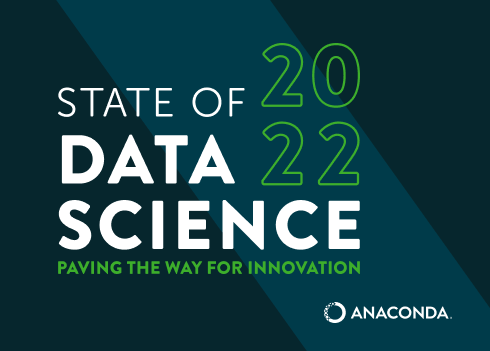2022 State of Data Science

The good news is, the hype around data science and machine learning is giving way to reality. But the bad news is that we’ve got a long way to go before we achieve maturity. Enterprises, academics, and data professionals have work to do before the discipline can really deliver on its potential for business and society.
Our 2020 State of Data Science report takes a look.
For this year’s survey we recruited individuals using data science and machine learning tools, as well as those assisting data scientists with their work, and received a total of 2,360 responses from over 100 countries. Respondents included data scientists, researchers, developers, analysts, data engineers, business managers, and more, showing that the disciplines and skill sets that power the field of data science remain as diverse as ever.
While enterprises have embraced open-source tools in a wide variety of functions, their security practices don’t always keep pace. A concerning 30% of respondents who have knowledge of their company’s security practices stated that their organization does not have any mechanism in place to secure open-source tools used for data science and machine learning.
Although COVID-19 has brought uncertainty to the employment landscape, enterprises should still pay attention to job satisfaction among data scientists. One-third of data professionals reported they plan to find a new role within the next 12 months, and another 24% expect to make a move within the next three years.
Getting data science outputs into production, where they can impact a business, isn’t always straightforward. Respondents reported that on average 45% of their time is spent getting data ready (loading and cleansing) before they can use it to develop models and visualizations. Once their models are ready for production, they contend with numerous environments, dependencies, and even skills gaps before models see the light of day.
Perhaps as a result of these production struggles, fewer than half (48%) of respondents feel they can demonstrate the impact of data science on business outcomes.
Concerns about bias and privacy are on the minds of data professionals, with nearly half of respondents citing one of these two themes as the “biggest problem to tackle in the AI/ML arena today.” Yet concerningly, only 15% of respondents said their team is currently actively addressing the issue of bias, and only 15% of universities include courses in ethics.
Today, the data science discipline is still finding its identity, but the journey to maturity is ongoing. We expect that the next 2-3 years will continue data science’s trajectory towards becoming a strategic business function across a wider range of industries than today, but that institutions and enterprises will face continued growing pains in the process.
Learn more about how data science practitioners and leaders can help ensure that the discipline achieves its full potential to improve society, consumer experience, and business performance.